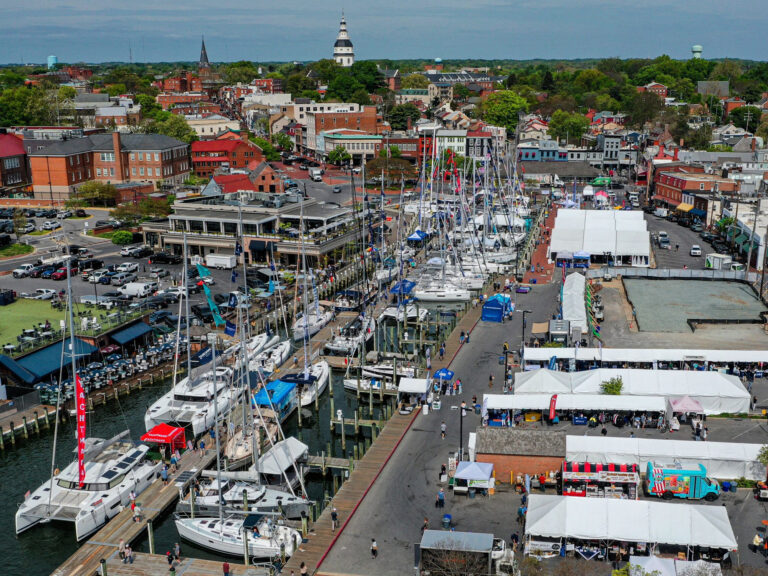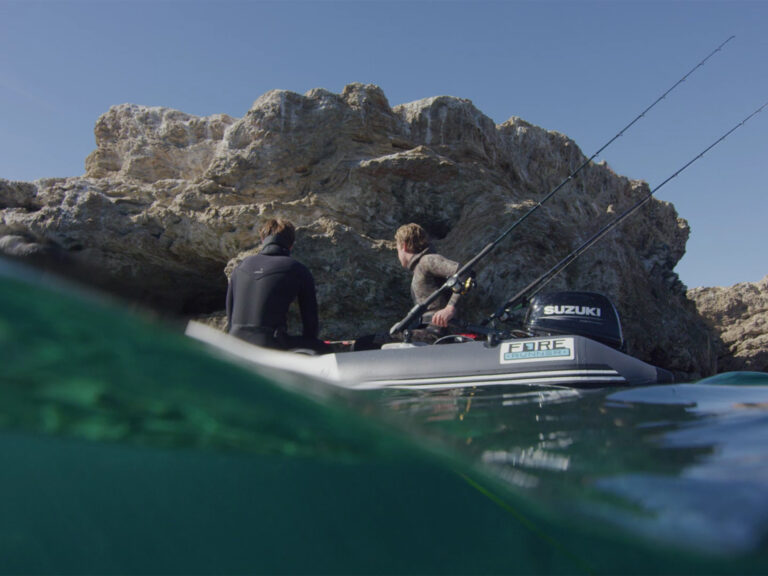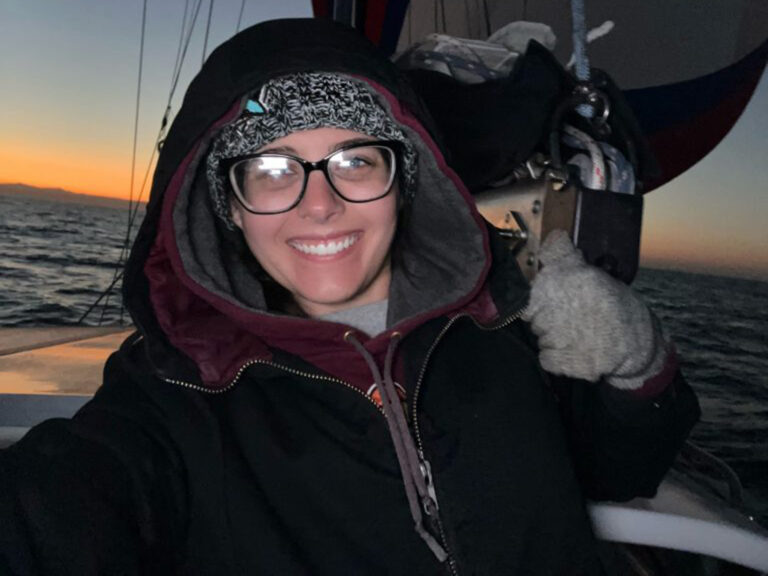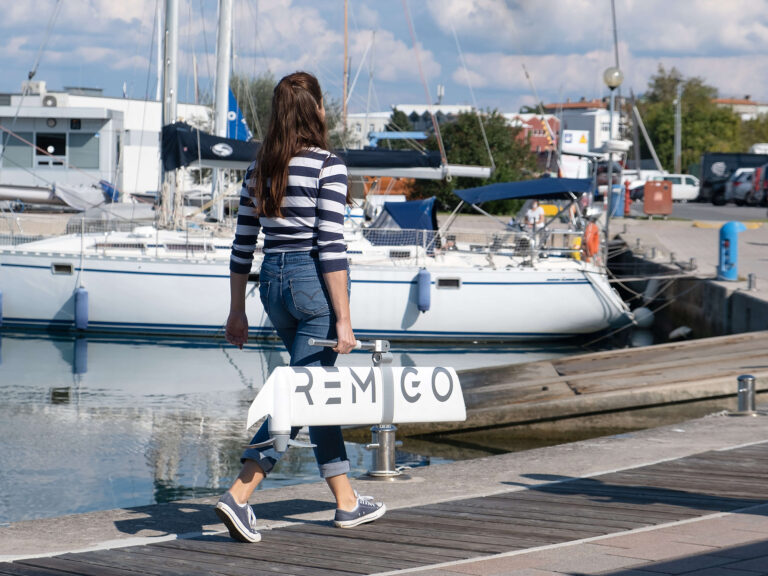Anchorage details:
Even the best anchorages on the west coast of the Baja peninsula aren’t totally weatherproof. Ensenada is protected by a breakwater that’s open to the south, so swells do work their way into the anchorage and sometimes set up a surge in the marinas. In the designated anchorage, the bottom is fouled with all manner of garbage, and the soupy mud makes for poor holding. Boats tend to start wandering as the afternoon breeze picks up, so make sure your anchor sets well, and keep an eye on your neighbors. Mooring buoys are available, but their quality varies. Bahia Tortugas (Turtle Bay) and Bahia Magdalena (Mag Bay) are large harbors where in a significant chop a wind shift can put boats on a lee shore in short order. Both have alternative anchorages that can be used in the event of a wind shift, and cruisers should be prepared to move, even at night, if they get whitecaps in the anchorage. All of the guides show the alternative anchorages in Turtle Bay. In Mag Bay, shelter can be taken at approximately 24 degrees, 43.9 N and 111 degrees, 58.3 W, about 10 miles northeast of Man-O-War Cove on a flat 12-foot shelf that extends out from the yellow cliffs for close to a mile. Plot your course from Man-O-War Cove well to the south of the shallow sand banks around the entrance to the channel leading up to Puerto San Carlos.
Boats and equipment:
A boat for cruising Mexico doesn’t have to be large, but it does need to be bluewater capable, which means seaworthy, strongly built, and offshore equipped. It must carry a full suit of sails including light-air sails, a proper preventer, and a pole for downwind sailing, at least two (preferably three) properly-sized anchors and rodes, a dinghy, some sort of self steering, a VHF radio, a compass, a depth sounder, some charts, a cruising guide, and two GPS units. If your boat is 40 feet or longer, you’re older than 40, or you have back problems, add a windlass. If you’ll only be cruising for six months and are on a budget, stop there. Otherwise, if you absolutely must stay in touch on a regular basis, add an SSB or ham radio and a Pactor modem. If you plan to cruise the Golfo de California (Sea of Cortez) for more than six weeks, add a watermaker. Optional equipment includes an outboard, refrigeration (make sure your icebox has at least four inches of high-quality insulation and preferably six), instruments, and radar. Once you have the boat set up the way you want it, make sure to upgrade your battery bank and charging sources to meet your electrical requirements.
Chartering:
The Moorings has a charter base out of Marina Palmira in La Paz. Check the Moorings website for more information (www.moorings.com). The northerly gales in the winter can make it difficult to get anywhere if you’re on a schedule. Chartering in late April to early June or mid-November to mid-December will minimize the risk of a three-day northerly gale or a hurricane ruining your vacation.
Charts and guides:
The charts for the Sea of Cortez aren’t accurate, and in many places they’re off by a mile or more, starting with the approach to La Paz. Double-check positions regularly with compass bearings, soundings and, at night, radar. Several people we met had downloaded maps from Google Earth of each anchorage, and these made a valuable addition to the charts. Two guides cover the entire coast of Mexico: Mexico Boating Guide by John E. Rains and Pat Miller (Point Loma Publishing) and Charlie’s Charts of the Western Coast of Mexico by Charles and Margo Wood (Charlie’s Charts). Gerry Cunningham’s three guides to the Sea of Cortez are available for purchase on his website (www.gerrycruise.com). These guides cover additional anchorages, and the chartlets are GPS-accurate, but shoreside information is dated. The Lonely Planet’s Baja & Los Cabos guide was invaluable for additional insights into the culture and history of the area, and it has good maps of the major towns. A new publication, Sea of Cortez: A Cruiser’s Guidebook by Shawn Breeding and Heather Bansmer (Blue Latitude Press LLC) is quite comprehensive.
Communications:
Phone calls are expensive in Mexico compared to many other countries, but cellphone coverage is improving. You can purchase a North American plan from your U.S. provider that will offer some coverage in Mexico, but make sure you’ll be covered in the areas where you intend to travel. Alternatively, you can buy an inexpensive Mexican cellphone when you reach Ensenada and “pay as you go,” using a phone card or credit card. International phone calls are expensive from Mexican pay phones. Avoid the brightly colored phones that advertise international calls, as their charges are far higher than using a public phone with a phone card purchased at a convenience store. The cards cost $20 and gave us about 45 minutes of calling time. Internet cafes are by far the cheapest way to use the Internet, and Skype (or other VoIP providers) is the cheapest way to call home. By avoiding the tourist areas and looking for an Internet cafe a few blocks away from the more glamorous parts of town, we often found rates as low as $2 per hour. WiFi and Broadband were available for a fee in the La Paz marinas and for free in coffee shops and some Internet cafes.
Events:
The Mexicans celebrate their holidays with an incredible array of street spectacles, parades, beach parties, dancing, and religious ceremonies. To get the most out of them, try to be in a small city, such as La Paz in Baja, or Zihuatanejo in Ixtapa on the mainland, for Christmas, New Year’s Eve or Semana Santa (Holy Week), the week before Easter. Mazatlan’s Carnival celebration is reputed to be the third largest in the world, behind Rio de Janiero’s Carnival and New Orleans’ Mardi Gras. If you plan to stay in a marina during these holidays, make reservations at least a month in advance. In addition, Mexico has an incredibly vibrant cruising community with organized activities going on almost year-round. The Baja Ha-Ha (www.baja-haha.com) has become an institution, with hundreds of crews participating in the annual sailing regatta and floating party. In La Paz, the Club Cruceros (www.clubcruceros.org) manages to put together some sort of a shindig for everything from Thanksgiving to St. Patrick’s Day. The calendar of events also includes cruisers’ Thanksgiving in Mazatlan, La Paz Bay Fest in April, and Loreto Fest in Loreto in May. Farther south, Sail Fest in Zihuatanejo (www.zihuasailfest.com) takes place in the beginning of February, and in March, the action moves north to Puerto Vallarta with the Banderas Bay International Regatta (www.banderasbayregatta.com).
Formalities:
Clearance procedures changed in April 2005, thanks to the tireless efforts of a group of cruisers to end the clearance in and out at every port that had been required until then. All offices are now centralized in a single facility in Ensenada. While it’s still possible to clear in at most other major ports, it’s far less convenient, so we would recommend stopping in Ensenada even for those who had intended to sail nonstop from San Diego to Cabo San Lucas or points south. After clearing in at their first port of entry, cruisers need only inform the Port Captain of their arrival and departure from successive ports until they clear out of Mexico completely. Marinas will take care of this for their guests; otherwise, a call on the radio to the Port Captain is all that’s necessary in most harbors.
Fuel and water:
Water and fuel can be obtained in marinas throughout Mexico. In some places, industrious Mexicans also supply fuel to boats from large plastic containers they transport in their pangas. In Turtle Bay, on the Pacific Coast of the Baja peninsula, fuel pangas will meet you as you come in the entrance. In Mag Bay, the Port Captain in the settlement at Man-o-War Cove will deliver fuel to boats in the anchorage from Puerto San Carlos, 10 miles away up a winding sand estuary. Water can be more problematic, especially in the desert environment of the Baja peninsula. Most boats that cruise the Sea of Cortez carry a watermaker.
Language skills:
You’ll enjoy the trip much more if you learn even a smattering of Spanish. But being able to converse provides you with real insights into the Mexican culture and lays the groundwork for lifelong friendships. Most people don’t get serious about learning Spanish until they realize how handicapped they are trying to operate without it. Luckily, there are a number of schools and private individuals offering language instruction in all of the Mexican towns where cruisers congregate. I highly recommend the intensive programs at the Centro de Educacion Continua in La Paz (www.ceclapaz.com). For less than $300, cruisers can choose from programs for beginners and intermediates that run four hours a day, five days a week, for three weeks.
Marinas:
Contact information for Mexican marinas is summarized at the Baja Ha-Ha website (www.baja-haha.com/Guide/Marinas.html).
Provisions:
You’ll be able to find just about anything you might need-often in the large chain stores you shop in at home-in larger communities like Ensenada, La Paz, Guaymas, Mazatlan, Puerto Vallarta, and Zihuatanejo. Prices are similar to what you’d expect in the United States. Smaller communities always have some sort of supermarket and a place where fresh produce is sold. Only in the tiny pueblos along the Pacific Coast of the Baja peninsula and in the southern cruising ground in the Sea of Cortez is it difficult to buy basic supplies, so cruisers should stock up before heading into these areas.
Security:
We had no security problems, and we left both boat and dinghy unlocked throughout our stay in Mexico. There were some thefts from boats in the anchorage in La Paz over the winter, and even a few thefts from boats in the marinas when their owners weren’t there, so it makes sense to take the normal precautions. But in general, we found the Mexicans to be friendly, helpful, honest, and hardworking. Don’t even consider bringing a gun into Mexico-not only do you not need it, but it will quite likely land you in jail.
Boat services and chandleries:
Almost anything basic you need can be found in cities like La Paz, Puerto Vallarta, or Zihuatanejo, and the cruisers nets will help you find it. Professional haulout facilities can be found in Ensenada, La Paz, San Carlos, and Guaymas, and most of the larger mainland cities. Prices aren’t significantly cheaper than in the United States for most work. Warranty work and replacements can be more problematic, with high customs fees and import duties charged even on items marked “yacht in transit.” Many cruisers spending time in La Paz flew or took a bus back to the States and returned with their needed equipment in hand. San Carlos and Guaymas are the only other places in the Sea of Cortez where some boat spares and equipment can be found.
Weather forecasts:
At least five times daily, nets provided weather information throughout Mexico via SSB and ham. Updated times and frequencies can be found at Don Anderson’s website (www.csus.edu/indiv/f/foxs/Summer%20Passage/sumpas_index1.html). Spanish- language forecasts are broadcast on VHF several times a day from different ports. Announcements are made on Channel 16 as to which channel to switch to for the broadcast. We found these forecasts to be quite accurate, but they only gave a 24-hour prognosis.
Wildlife experiences:
If you’re interested in close encounters with wildlife, the Baja peninsula offers two unique experiences. First, a sea-lion colony makes its home off the northern end of Isla Partida, one of two large islands about 20 miles from La Paz, in a set of sea stacks known as Los Islotes. On calm days, tour boats bring tourists from La Paz to swim with the sea lions. It’s possible to anchor a cruising boat off the islands in settled weather with little swell, or, if your boat is equipped with a large dinghy and outboard, to leave the boat in the northernmost anchorage on Partida and go over in the dinghy. Second, the gray whales that make their way down the coast of California each year arrive in January to calve in three sheltered lagoons on the Pacific Coast of the Baja peninsula, one of which is Mag Bay, the only one accessible to keel boats. You’re not allowed to get close to the whales in your own boat, but tour operators will take you out in large pangas. Many of the whales seem to enjoy their interactions with people and actively seek out the boats. Some whales come right alongside a boat with their calves on their backs, allowing visitors to pet their offspring; others maneuver carefully, then whip their tail across the surface of the water, drenching everyone in the boat. The best time to see the whales is from mid-January to the beginning of March, which is after most crews have made their way down the west coast. But tours also operate out of La Paz, taking tourists across the peninsula to Lopez Mateos on a daily basis throughout the season. I highly recommend Espiritu and Baja Tours (www.espiritubaja.com). The owner, Jose Luis Martinez, speaks English fluently, and he only takes small groups when he knows the whales are accessible.







